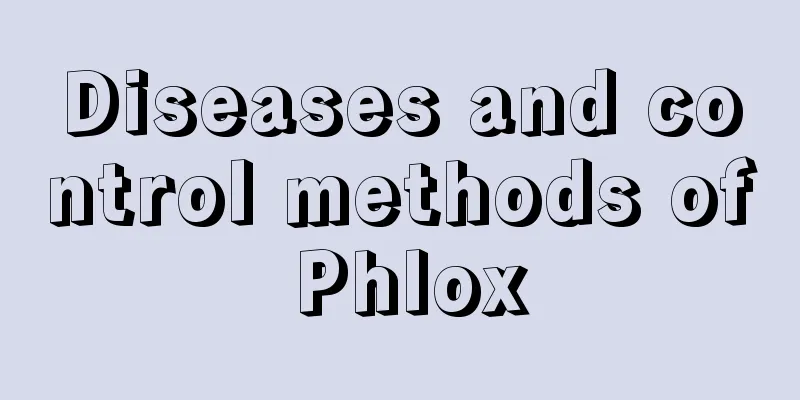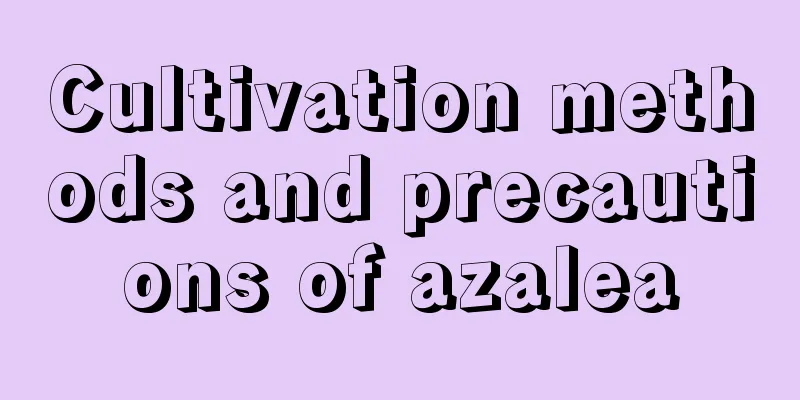Diseases and control methods of Phlox

Brown spot of PhloxsymptomBrown spot disease mainly harms leaves, pedicels and stems. In the early stage of the disease, circular spots will appear on the leaves, gradually expanding outward, and the spots will merge into pieces, causing the leaves to dry up, and long strip-shaped spots will appear on the stems. During the flowering period, the flowers turn yellow and wither, and even a black mold layer appears. Prevention and treatment methodsControl the humidity of the environment, ventilate frequently, and do not water directly from top to bottom when watering to avoid soaking the leaves. Before planting, the soil and flower pots must be thoroughly disinfected, and the roots must be irrigated with methyl thiophanate solution once every half a month to effectively prevent brown spot disease. Phlox white spot diseasesymptomWhite spot disease, also known as leaf spot disease, is a common wilt disease of Phlox. When the disease occurs, water-like spots appear from the bottom to the top of the plant, with a diameter of about 2 to 4 cm. As the bacteria spread, the spots will turn dark brown in the later stages. Prevention and treatment methodsPlants should be pruned in time in autumn, and diseased leaves and plants should be removed. For those that grow weak, appropriate fertilizers can be applied to increase their disease resistance. The maintenance environment should ensure good ventilation and moderate watering, and should not be too dry or too wet. During seedling cultivation, use potassium permanganate solution to irrigate the roots in time for disinfection and sterilization. During the outbreak period, spray Benomyl in time. Phlox virus diseasesymptomViral diseases are mainly spread by insects and sap. When insect infestations occur, wounds appear on the leaves, and in a relatively humid environment, they may be infected with viral diseases. When the disease occurs, the edges of the leaves will turn red and even slowly dry up. It cannot bloom normally, the flowers turn green and become deformed, and the leaves lose their luster. Prevention and treatment methodsRemove diseased plants promptly and disinfect the soil to prevent infection of other plants. Make good preparations for insect prevention, spray pesticides in time and prevent pests. |
<<: Common orchid diseases and their prevention and treatment methods
>>: Common diseases and pests of Yalezhiwu and their control methods
Recommend
Can cactus be exposed to the sun? Can it be exposed to the sun in summer?
Can cactus be exposed to the sun? Cactus needs su...
Breeding methods and precautions for black rabbit ears
1. Maintenance methods 1. Temperature: It has str...
How to grow Phalaenopsis
1. Moisture Phalaenopsis prefers growing conditio...
The reason why the leaves below the big leaf green radish turn yellow
1. Insufficient watering Reason: The leaves below...
When is the best time to transplant wolfberry trees?
Wolfberry trees like to grow in a cool environmen...
How to plant bamboo to survive? Planting method of transplanting bamboo
Bamboo is slender and upright, emerald green all ...
What are the methods of reproduction of Zibao?
The reproduction method of Zibao: sowing The sowi...
Soilless cultivation method of lotus bowl
Preparation Cultivation medium Although bowl lotu...
How to treat the black spots on the leaves of trumpet creeper? The leaves fall off when touched.
1. How to treat black spots on the leaves of trum...
Can fresh dendrobium be eaten after it sprouts? How to plant it after it sprouts?
1. Can sprouts be eaten? Fresh Dendrobium can gen...
How to plant loquat seeds
1. Planting method 1. Select the core: The loquat...
The legend of Jacaranda
legend On a street in Dehua, a small mountain cit...
How often to water newly planted succulents
1. How often to water There is no fixed time for ...
What fertilizers are most taboo for eggplant (what are the precautions for the fertilizers needed for high yield of eggplant)
Eggplant has a relatively large demand for fertil...
If you cut the Clivia once, 6 buds will sprout in 10 days, and the orchid will become so big that the pot can’t even hold them all!
Clivia "Beheading" Diary 1. Clivia is t...









